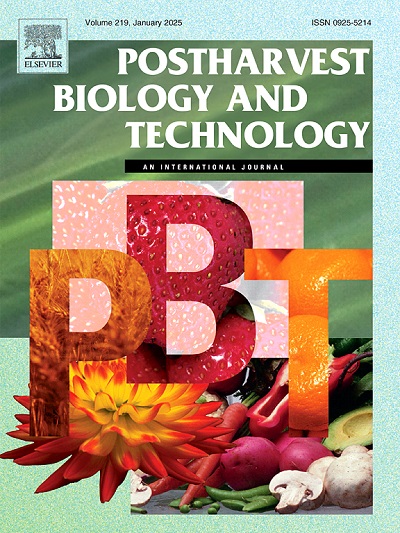Synergic use of essential oil and sous-vide packaging for ready-to-cook organic vs. conventional globe artichoke heads
IF 6.4
1区 农林科学
Q1 AGRONOMY
引用次数: 0
Abstract
Given the reduced production in organic farming and its higher costs, the present study aimed to define the suitability of organically grown (ORG) globe artichoke heads of cv. Tema 2000 to be processed as fresh-cut product in comparison with conventionally grown (CONV) ones. The study investigated the combined use of parsley essential oil (EO) and biodegradable cellulose pouches suitable for hypobaric packaging (CELL) as a sustainable alternative to conventional plastic bags (OPA) during 22 days of refrigerated storage. Results indicated that EO addition was extremely effective in improving the physical properties of CELL pouches and limiting the microbial growth during artichoke storage, even in ORG samples, which are typically more contaminated due to natural fertiliser use. Considering the importance of a biodegradable packaging choice, the EO treatment improved the CELL performance and prolonged the shelf life, suggesting that this treatment is promising for fresh-cut globe artichoke processing.
求助全文
约1分钟内获得全文
求助全文
来源期刊

Postharvest Biology and Technology
农林科学-农艺学
CiteScore
12.00
自引率
11.40%
发文量
309
审稿时长
38 days
期刊介绍:
The journal is devoted exclusively to the publication of original papers, review articles and frontiers articles on biological and technological postharvest research. This includes the areas of postharvest storage, treatments and underpinning mechanisms, quality evaluation, packaging, handling and distribution of fresh horticultural crops including fruit, vegetables, flowers and nuts, but excluding grains, seeds and forages.
Papers reporting novel insights from fundamental and interdisciplinary research will be particularly encouraged. These disciplines include systems biology, bioinformatics, entomology, plant physiology, plant pathology, (bio)chemistry, engineering, modelling, and technologies for nondestructive testing.
Manuscripts on fresh food crops that will be further processed after postharvest storage, or on food processes beyond refrigeration, packaging and minimal processing will not be considered.
 求助内容:
求助内容: 应助结果提醒方式:
应助结果提醒方式:


